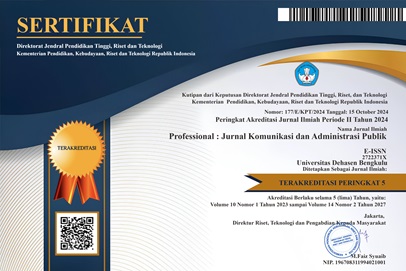Strategi Komunikasi Guru Konseling SMAN 4 Sungai Penuh Dalam Pemenuhan Perhatian Pada Siswa Slow Learner
Abstract
Not all children are born with normal physical and psychological development. Some of them were also born with a slow learner state. The role of the guidance and counseling teacher is very important in giving attention to them, so they can become confident and enthusiastic in learning. This study aims to see how the counseling teacher's communication strategies in fulfilling the attention of students who experience Slow Learner. This study used a qualitative descriptive method by interviewing three guidance and counseling teachers. The results of the study found that the communication strategies used by BK teachers at SMAN 4 SungaiFull in providing counseling and attention to slow learner students were: . First: is direct communication with parents of students by conducting home visits; Second; forming the PIK-R organization as a forum for communication and information for students in schools, including slow learner students; Third or finally, the counseling teacher performs individual counseling services or special service counseling patterns that are needed by slow learners or learning delays.
Downloads
Copyright (c) 2022 Ahmad Khairul Nuzuli, Oca Juanda Putra, Noni Yunita Putri.T, Nover Darmansyah, Rian Pega Pratama, Romi Roy Chandra

This work is licensed under a Creative Commons Attribution-ShareAlike 4.0 International License.





